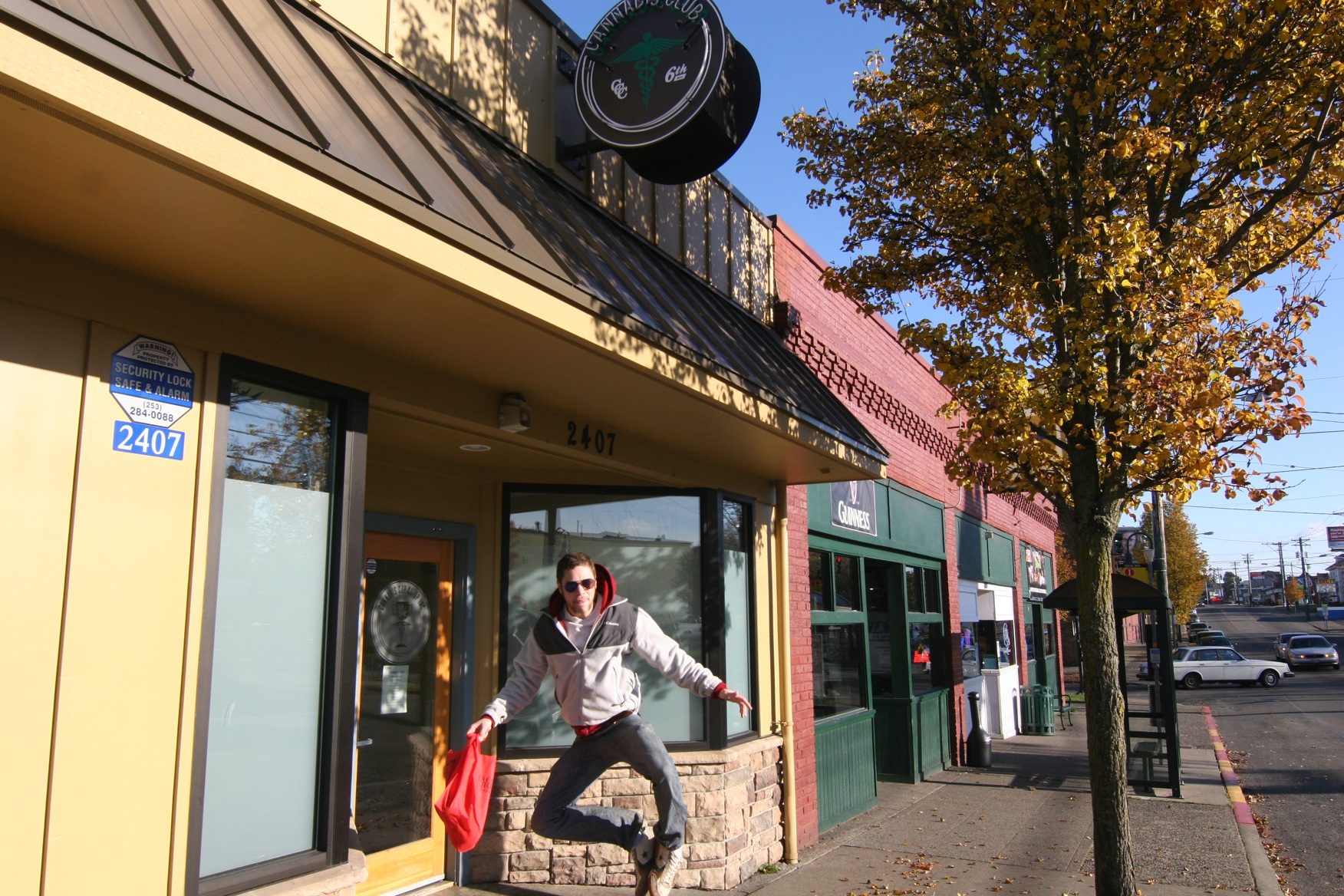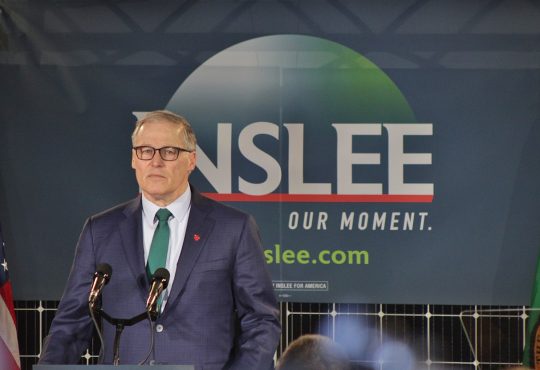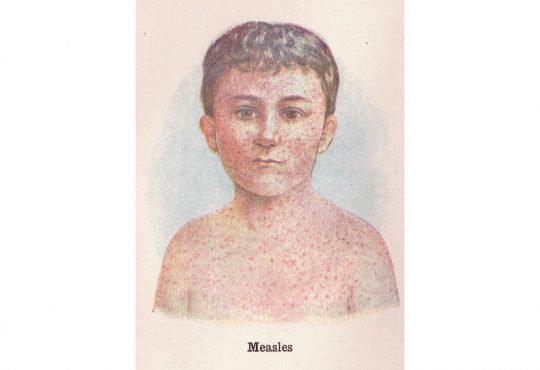
Located just a few blocks away from the University of Puget Sound, the Cannabis Club Co-op serves the needs of medical marijuana patients on Tacoma’s North End, including some Puget Sound students. Despite the ambiguous legal position of the co-op relative to federal laws, it is open for business and is increasing in popularity.
The Cannabis Club Co-op, as the name indicates, is not a dispensary but a cooperative. As of May 2011, dispensaries are no longer legal in Washington State. This is a result of Governor Chris Gregoire’s choice to veto measures designed to clarify state laws regarding medical marijuana.
Previously, dispensaries were allowed to serve one patient at a time. Dispensaries interpreted this to mean that they could serve patients back-to-back, but the Governor’s veto meant that providers would have to wait 15 days between patients. The change in law has given greater prominence to co-ops like the Cannabis Club, which now have a legal advantage over regular dispensaries.
The Seattle Times reported, “Over the past decade, some nonprofit cooperatives in Seattle have served thousands of patients, typically under the radar or with tacit approval from authorities. Such operations rely on the fact that while patients must grow their own marijuana or designate someone else to grow it for them, nothing in the law said they couldn’t grow those plants together.”
In order to serve as many people as possible, co-ops require patients to sign in when they arrive to purchase marijuana. As a temporary member of the co-op, patients select their strain of weed or flavor of edible, hand over their cash and sign out again.
The dispensary offers a Baskin-Robbins-like array of marijuana strains, with over 30 varieties listed on their website. Prices range from $5 a gram for less potent strains to $12 a gram for more premium varieties, with most strains costing around $10 a gram—slightly cheaper than street prices. Edibles are also reasonably priced at $5 for cookies, cornbread, brownies and other treats.
One patient I interviewed, “Jacob,” talked about the atmosphere inside the co-op: “Except for a sign, there’s nothing cannabis related. It looks like a doctor’s office. When you walk in the front, there’s a TV, magazines and crappy art on the walls. When you go in the back, it’s different. You go in and its like walking into a jewelry store… there’s glass cases and weed in jars. There’s people of all ages. In fact, when I went there, the people were all elderly.”
Jacob qualifies for medical marijuana because of a genetic condition. He has a type of muscular dystrophy, and, after seeing a specialist about the disease, was prescribed medical marijuana. A prescription is different than a medical card in that it expires after a year. Jacob explained that he was surprised to hear his doctor recommend the relief of marijuana.
“I went to learn about other things. When he found I was smoking already, he gave me a prescription for it. He believes there are medical purposes,” he said.
For Jacob, attaining a prescription was unexpected and fairly simple. However, patients seeking the relief of medical marijuana face numerous legal obstacles. For those without a medical marijuana card or prescription, marijuana is illegal in Washington State, and possession carries a minimum 24-hour jail sentence, along with a $250 fine. Possession of any amount greater than 40 grams is a felony, punishable by up to five years in jail and a $10,000 fine. Cultivation and sale in any quantity are automatic felonies as well.
Medical marijuana users are exempt from these penalties under Washington State law and are allowed to cultivate and possess a relatively large amount of weed— a 60-day supply under State statute RCW 69.51A.040. This is defined as up to 24 ounces of usable product and 15 plants. Any more than this and patients risk arrest and prosecution, although medical need may be used as an affirmative defense in court.
While medical marijuana possession is legal under state law, the federal government considers marijuana a Schedule I controlled substance—patients are not immune from federal prosecution. On Oct. 19, 2009, the United States Attorney General’s office released a statement clarifying the Department of Justice’s position on marijuana in general and medical marijuana in particular. The guidelines set forth by Attorney General Eric Holder are contained in a memo written by Deputy Attorney General David W. Ogden. The statement lays bare the difficulties of containing the flow of drugs across borders and the violence and gang culture that illegal drug money fuels.
“The illegal distribution and sale of marijuana is a serious crime and provides a significant source of revenue to large-scale criminal enterprises, gangs and cartels. One timely example underscores the importance of our efforts to prosecute significant marijuana traffickers: marijuana distribution in the United States remains the single largest source of revenue for the Mexican cartels.”
This statement corroborates recent research by University of Washington Associate Professor of Sociology Katherine Beckett and Associate Professor of Geography Steve Herbert, who found that, “By 2006, 44 percent of the nation’s roughly 1.9 million drug arrests involved only marijuana. In fact, most of the increase in the number of drug arrests since 1990 was caused by rising numbers of marijuana arrests. This pattern leads some experts to suggest that the war on drugs is, increasingly, a war on marijuana.”
Combating cartels is a huge drain on the resources of the federal government and has recently left Holder embroiled in the so-called “Fast and Furious” scandal.
The Los Angeles Times reported, “A federal operation dubbed ‘Fast and Furious’ allowed weapons from the U.S. to pass into the hands of suspected gun smugglers so the arms could be traced to the higher echelons of Mexican drug cartels. The Bureau of Alcohol, Tobacco, Firearms and Explosives, which ran the operation, has lost track of hundreds of firearms, many of which have been linked to crimes, including the fatal shooting of Border Patrol Agent Brian Terry in December 2010.”
A house committee subpoenaed Holder to testify on his knowledge of the operation. Holder admitted that his office did in fact know of the operation and that the willingness of his office to defend the Bureau of Alcohol, Tobacco, Firearms and Explosives was misguided. Holder drew additional criticism for his unwillingness to apologize to the family of Agent Terry, and 38 Republican members of congress have called for his resignation.
Although the motivations for Holder’s criticism appear blatantly partisan, Holder’s support of the war on drugs more generally has perhaps more distressing implications for medical marijuana patients.
One of these implications is that patients have no clear way of knowing whether their marijuana use indirectly supports such criminal activity. No one, from a street-level dealer to a large co-op, has any incentive to reveal where they acquire their supply, and to ask about the source of drugs is generally perceived as a nosy and suspicious faux pas.
Part of this reluctance is economic—no middleman wants to be cut out. But much of this hesitation stems from the need to cover up illegal activities legitimizing the flow of money from drug sales to large-scale crime. The paradox is obvious: the laws that seek to disrupt this flow in fact ensure its continued existence, and patients hazard the chance of being complicit.
When I asked Jacob if he knew where his weed came from, he said, “I’ve only known in one instance. I had a friend who was a farmer in Humboldt, and he helped out his neighbors who grew and gave me some of their weed…I do know some dealers who have told me that the weed they are buying [to sell on the street] is also being sold to the clubs.”
Another implication of the federal government’s stance is that patients are never safe from prosecution, despite their casual distance from the violence of the cartels. Holder’s office has made explicit concessions to the limited harm of medical marijuana use.
The 2009 statement explains that the “prosecution of individuals with cancer or other serious illnesses who use marijuana as part of a recommended treatment regimen consistent with applicable state law, or those caregivers in clear and unambiguous compliance with existing state law who provide such individuals with marijuana, is unlikely to be an efficient use of limited federal resources…This guidance regarding resource allocation does not ‘legalize’ marijuana or provide a legal defense to a violation of federal law.”
In other words, safety from collateral damage is not guaranteed. Patients cannot be assured that they will not come under federal investigation, and supply chains often remain well hidden. The non-monetary social costs of such policies are difficult to calculate, but Beckett and Herbert indicated that these were significant factors in the harm caused by the policy stance of the Department of Justice.
Beckett and Herbert concluded that their findings indicated that “the enforcement of marijuana laws does not measurably reduce marijuana use or any harm that may be associated with it. We also conclude that the war on marijuana is quite costly, in both financial and human terms.”
How might students at the University of Puget Sound be affected? Under the Drug-Free Schools and Communities Act of 1986, the University is required to set policy based on both federal and state laws. This means that students who are medical marijuana patients cannot medicate on school grounds or at school activities and that they face the same sanctions as recreational users if caught.
The campus-wide policy statement reads, “The University of Puget Sound prohibits the irresponsible or unlawful possession, use, or distribution of alcohol and drugs by students, faculty, and staff on university premises or as part of any of its activities. This Alcohol and Drug Policy is intended to meet, at a minimum, the requirements of all applicable federal and state laws.”
For those who live in the dorms, smoking is an endeavor often fraught with risk. I did not talk to any student-patients living in the dorms, as their incentive to admit to breaking a university policy, as well as discussing their medical condition, is fairly non-existent. Jacob, who lives off-campus, wasn’t worried about the University’s policy.
“If there was a patient who lives in the dorms, it would come to a head. On personal level I could give a s***,” he said.
The future of legal medical marijuana nationwide remains as uncertain as the grey area of the co-op.
Despite Holder’s pronunciations, federal government raids on medical suppliers have elicited outrage in states such as Montana and California, raising questions of state sovereignty and federal law enforcement priorities.
The Cannabis Club Cooperative, for all its seeming professionalism and legitimacy, is an outpost of the contentious and violent flow of drugs from vendor to consumer which occurs unseen nearly everywhere in the United States.
For doctors, the co-op represents a pharmacy. For street dealers, it’s competition. For those suffering from chronic pain or disease, it represents a place to obtain relief—as long as they can legitimize their high.
PHOTO COURTESY / MAX HONCH



